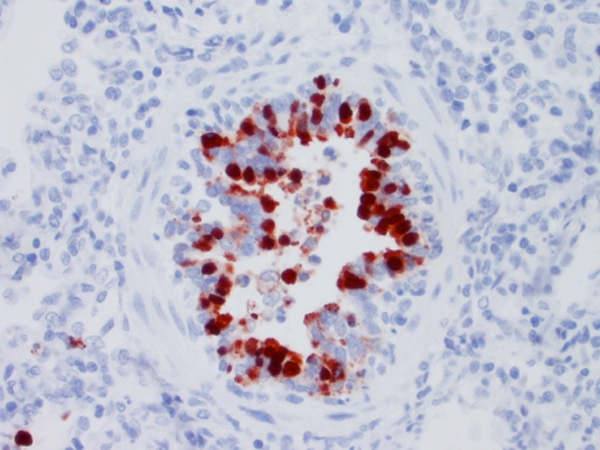As of Aug. 31, 289 cases of H3N2v flu virus have been reported to the U.S. Centers for Disease Control and Prevention since July 2012. Fifteen people have been hospitalized and one person has died.
September 4, 2012

As of Aug. 31, 289 cases of H3N2v flu virus have been reported to the U.S. Centers for Disease Control and Prevention (CDC) since July 2012. Fifteen people have been hospitalized and one person has died. Most of the cases occurred among children who exhibited pigs at county fairs, which sparked a debate about continuing swine exhibitions this year.
With the media coverage of these influenza cases, we thought it a good idea to provide some up-to-date information about this virus, with current recommendations relevant to hog farmers from an occupational standpoint.
The first obvious question is, “What is H3N2v (variant) flu?” This is a relatively new strain of flu first detected in people in the United States in July 2011. H3N2v is just one of many types of flu. The letters and numbers serve to distinguish different flu viruses. The “v” or "variant" designation is applied when a virus that normally circulates in pigs is found in humans. This new influenza A (H3N2v) virus acquired some genetic components from the 2009 pandemic strain of influenza A (pH1N1). A picture illustrating influenza virus infected cells (in brown) lining the airways of the lung of an infected pig is shown accompanying this article.
This H3N2v appears to be mostly spread by direct contact with infected pigs and does not readily spread person to person. Infection likely depends on your natural immunity and health.
The CDC provided some recommendations on who should avoid swine exhibitions. People with weaker immune systems, such as children under the age of 5, people over 65 years old, pregnant women, and people with long-term health conditions (i.e. asthma, diabetes, or weakened immune systems) should avoid the exhibitions. It should be reemphasized that influenza is not transmitted from eating pork or pork products.
The next obvious question is, “What about the swine producer? What is his/her risk?” We know that the H3N2v virus is circulating in commercial hog operations. Therefore, it is possible that workers may become infected. This virus behaves like the typical seasonal influenza virus causing fever, cough, sore throat, runny or stuffy nose, body aches, headache, chills and fatigue. Unfortunately, the yearly seasonal influenza vaccine likely will not protect folks against the H3N2v strain.
What are some recommendations to protect yourself, your staff and your pigs?
Wash hands frequently with soap and running water before and after exposure to animals.
Never eat, drink or put things in your mouth while in animal areas and don’t take food or drink into animal areas.
Don’t work with pigs if you feel ill with influenza-like symptoms.
If you have sick pigs and suspect influenza, work with your veterinarian on control strategies.
If you are working with sick pigs or suspect influenza infection, then take some basic precautions. This may include wearing protective clothing, gloves, and filtering face pieces (like an N95 respirator http://www.cdc.gov/niosh/npptl/topics/respirators/disp_part/n95list1.html) that cover your mouth and nose. Again, remember to practice good hand hygiene.
For additional information and resources, see www.pork.org and click influenza resources or visit the Centers for Disease Control and Prevention (CDC) Web site: http://www.cdc.gov/flu/spotlights/h3n2v_us_cases.htm
You May Also Like



